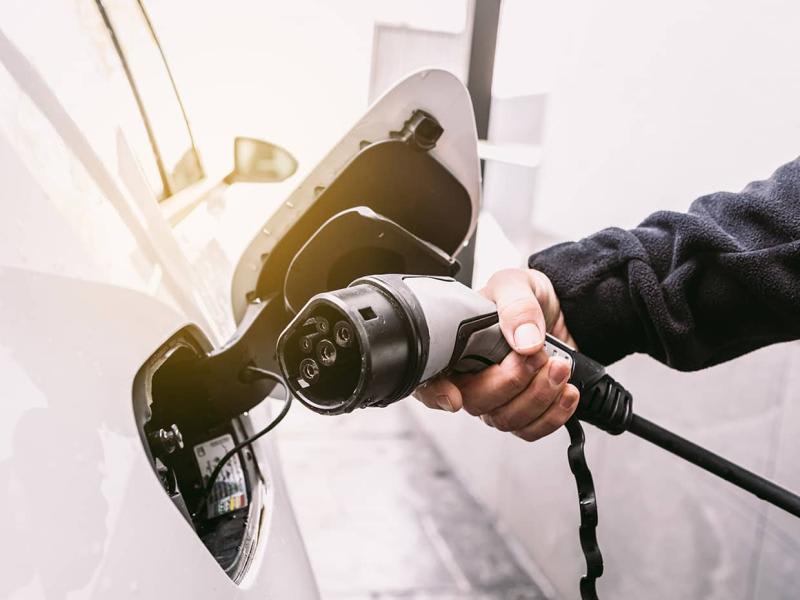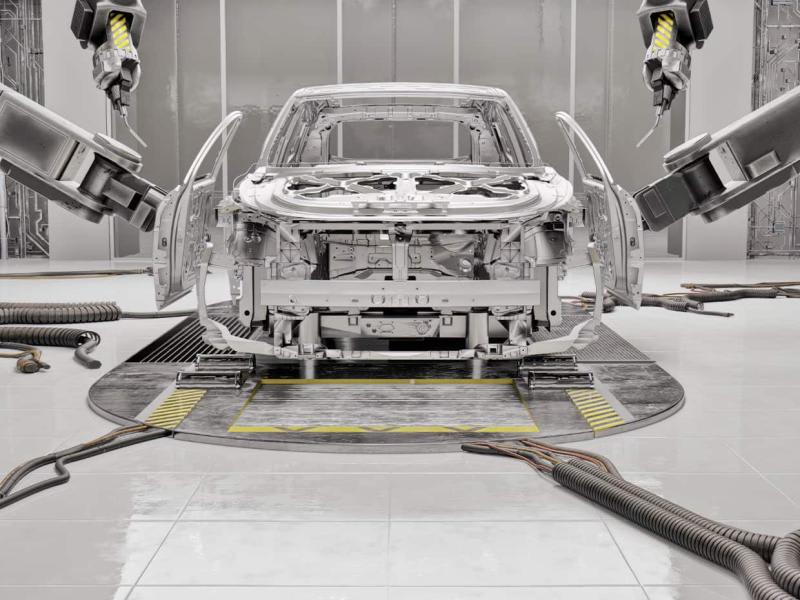This complex network of companies, industries, and technologies spans the globe, involving everything from raw materials sourcing and production to component manufacturing and distribution. Supply chains must keep pace to avoid bottlenecks and ensure that demand can be met in the face of compounding risks including rising costs and geopolitical uncertainties. Lawrence Keyler, global automotive leader with RSM US LLP, and Tom Pugh, RSM UK’s economist, discuss four considerations that car manufacturers should pay attention to as they attempt to meet demand.
Energy security will shape the discourse
Tom Pugh: The war in Ukraine has prompted a global conversation about energy security. To reduce a reliance on oil, combined with a greater focus on green, sustainable alternatives, the global demand for EVs is expected to increase at a compound annual gross rate of 21.7% by 2030, according to a Markets and Markets report.
The resulting impact on natural gas prices in Europe has been significant, and while this has not quite had the same impact on the United States and other parts of the world, it is something decision makers will need to monitor closely. United Nations allies could further tighten sanctions on Russia in a way that affects global oil supply, which has so far remained unscathed. Tightening sanctions would cause a spike in oil prices and influence inflation, potentially boosting EV sales further.
Lawrence Keyler: Demand for EVs is also driven by countries across the globe outlining commitments to sustainability, and a greater awareness of our personal carbon footprints. Consumer access to charging infrastructure will be a key factor in the acceptance and growth of EVs, and is something that requires further development. Currently, the Netherlands has the highest EV charger density, with 19-20 chargers per 100km, compared to the UK’s three per 100km. While regulatory alignment and tax incentives can support the increased adoption of EVs, it is critical that utilities in all markets provide more timely grid connections.
Another challenge for EV adoption is the rising material and production costs for battery manufacturers. The cost of producing EVs will increase as the price of base minerals like lithium and cobalt surge, and the race is on to develop supply chains in the countries that are rich in these natural resources. In a decade, we will need infinitely more access to these minerals than we do currently, so companies need to assess their alternatives to maximise their margins. For example, the United States relies heavily on imports of raw materials from China, meaning there is pressure to quickly manufacture its own EV components domestically.
Reglobalisation and nearshoring set to dominate
Pugh: Throughout the pandemic and other recent economic and geopolitical crises, it has become apparent is that relying on one single supplier is unsustainable for supply chains. China has, by far, the biggest EV manufacturing capability in the world, but the fallout of supply chain issues linked to the pandemic - combined with U.S. legislation like the CHIPS Act and Inflation Reduction Act, and the funding of Important Projects of Common European Interest (IPCEI) partnerships in the EU - means we can expect higher investment in domestic markets, reducing reliance on international sources.
However, the sheer scale of investment needed to establish a domestic supply chain is somewhat implausible; it is unlikely that one market can do it all, and there is enough to go around in terms of anticipated demand. This means we are likely to see risk spreading across countries. Instead of just looking at China, it will become the norm for companies to consider options in Vietnam, India and other countries, building in an extra layer of resilience.
Keyler: Agreed; friendshoring and nearshoring are becoming buzz words in supply chains, and each of these tactics have unique approaches.
Friendshoring is founded on long-term relationships and experience with key suppliers regardless of their location, and offers benefits like quality control, consistency, and true collaboration. However, inherent challenges related to the ability to adapt to changes in customer demand remain. In addition, due to the proximity of the source and customer location, companies may experience higher prices compared to sourcing from low-cost countries.
Nearshoring focuses on locating production and sourcing closer to the end customer, resulting in more cost-efficient production and transportation (improving delivery times) as well as greater flexibility to scale quickly as customer demands change. While challenges may remain when it comes to labour costs, cultural differences, and potential language barriers, overcoming these will be essential to fortifying supply chains in the face of an anticipated increase in demand.
Technology trumps
Pugh: Just as the pandemic reinforced the need to place eggs in multiple baskets, so to speak, it also taught us that the ‘just in time’ supply chain strategy is flawed. More and more, we will see an increase in the use of technological innovations and artificial intelligence to help predict demand, increase efficiency and productivity.
Predictive procurement, which can be used to identify real-time patterns and trends in demand and help drive away from the ‘build shy’ trend adopted by manufacturers in recent years, has only scratched the surface. Changes will become more evident over the next few decades as AI becomes more integrated in the global supply chain system. Worldwide, we are very much at the start of that road and there will be a lot more to come.
Keyler: An enhanced focus on this, alongside business intelligence (BI) and other data analytic tools will provide companies the opportunity to be more proactive in managing quality and customer demand throughput in the face of economic headwinds.
Many companies may experience reduced capital expenditures, and reprioritising spending and alignment with key initiatives will be critical. Those companies that invest in robotics, AI, and BI can maximise profitability and margins, bringing an enhanced return on investment to their investors. However, barriers for a more widespread adoption remain.
Creating the workforce of the future
Keyler: Workforce planning, attracting and retaining talent will be a high priority. Talent development necessary to shift to a workforce with greater technology skills will require significant investments, particularly as skilled labour requirements for EV production are unique. Any failure to attract and retain the required labour force will impact throughput production necessary to meet customer demand over time.
As EV production continues to transition and expand, the establishment of new manufacturing facilities will result in a variety of novel jobs. Beyond skilled workers needed for battery assembly, and the supervisors and managers to oversee the operations within these facilities, there will be a significant increase in the number of computer-based occupations that create and support applications and networks. Engineers versed in EV technology are necessary for the design and development of structures and products. There will also be an increase in key resources to provide long-term support for these new technology platforms.
All of these are critical as companies assess and seek to bring efficiencies to their existing supply chains and enhance the customer experience.
Pugh: And, while there will continue to be opportunities for companies to leverage innovation and technology, it is important to remember that there is no substitute for human insight. These systems cannot predict or deal well with unexpected geopolitical events, so upskilling your workforce for the future to ensure your supply chain managers can pivot when faced with surprise pressure points is vital.






